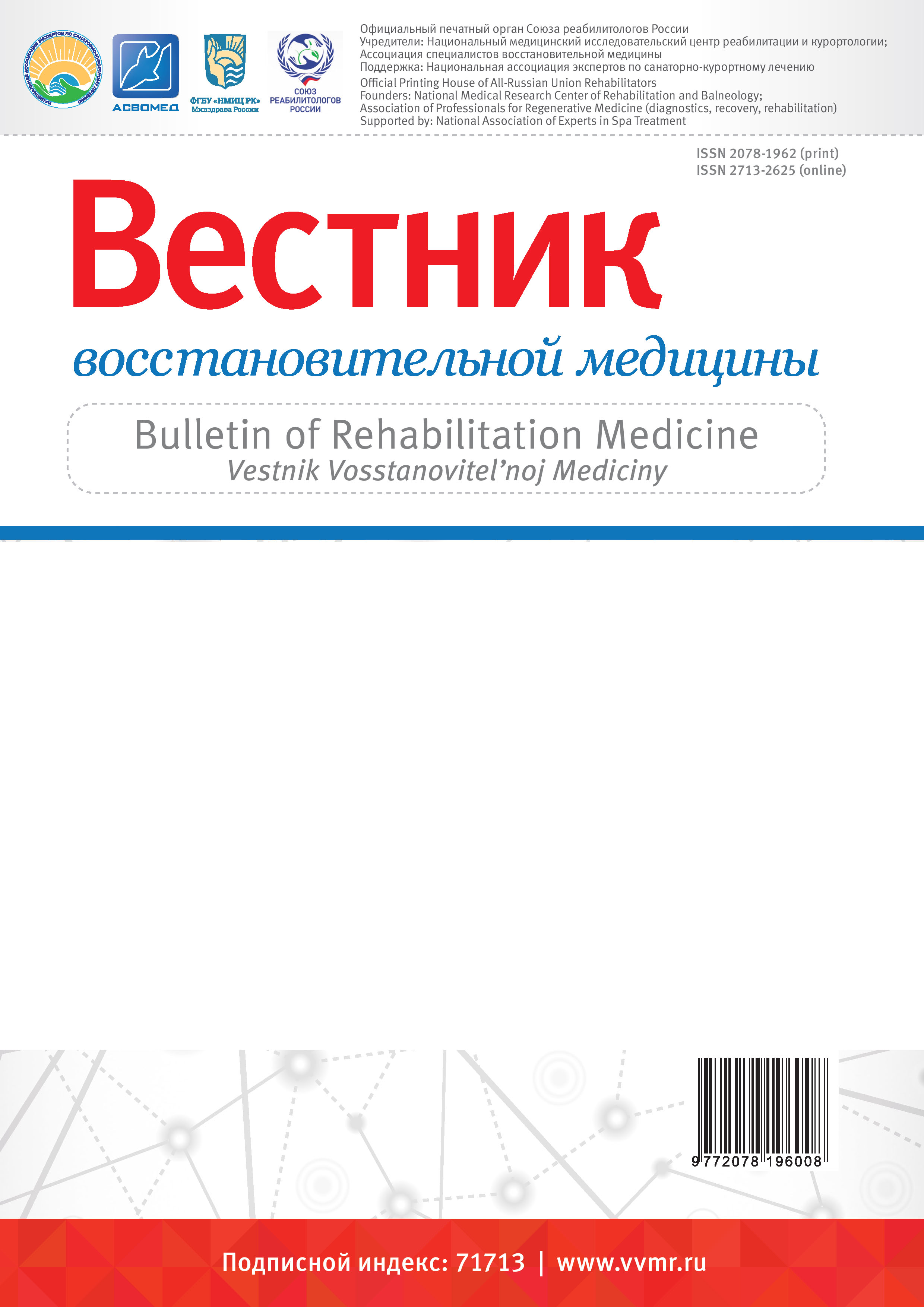The review analyzes the data of scientific publications on the effects of molecular mechanisms initiated by physical exertion on the function of the cardiovascular system and the course of cardiac diseases. As practice and a number of evidence-based studies have shown, the beneficial effects of physical activity on the outcomes of diseases in a number of cardiac nosologies are comparable to drug treatment. Numerous mechanisms mediate the benefits of regular exercise for optimal cardiovascular function. Exercises are cause widespread changes in numerous cells, tissues, and organs in response to increased metabolic demand, including adaptation of the cardiovascular system. Physical exercises, which include various types of aerobic exercises of varying intensity and duration, is an important component of the therapeutic treatment of patients with cardiovascular diseases. Knowledge of the molecular basis of the physical activity impact on the cardiovascular system makes it possible to use biochemical markers to assess the effectiveness of rehabilitation programs.
kardioreabilitaciya, serdechno-sosudistye zabolevaniya, fizicheskie nagruzki, molekulyarnye mehanizmy
1. Thomas RJ, King M, Lui K, et al. Pokazateli effektivnosti AACVPR / ACC / AHA 2007 po reabilitacii serdca dlya napravleniya i okazaniya uslug po reabilitacii serdca / vtorichnoy profilaktike. Journal of Cardiopulmonary rehabilitation and prevention 2007; 27 : 260-90
2. Piepoli MF, Corrà U, Benzer W, et al. Vtorichnaya profilaktika cherez serdechnuyu reabilitaciyu: ot znaniy k realizacii. Dokument s izlozheniem pozicii Sekcii kardiologicheskoy reabilitacii Evropeyskoy associacii profilaktiki serdechno-sosudistyh zabolevaniy i reabilitacii. Eur J Cardiovasc. Predyduschaya reabilitaciya 2010; 17: 1-17]
3. Ismaylov I.S., Mamed'yarova I.A., Baranov A.V., Mustafaev R.D., Lebedeva O.D., Achilov A.A. Sochetannoe primenenie kinezo- i lazeroterapii v korrekcii narusheniy regionarnoy gemodinamiki pri dilatacionnoy kardiomiopatii. Voprosy kurortologii, fizioterapii i lechebnoy fizicheskoy kul'tury. 2020. T. 97. № 5. S. 13-21. DOI:https://doi.org/10.17116/kurort20209705113
4. CorbalanR., BassandJ.P., IllingworthL., KayaniG., PieperK.S., AmbrosioG., CammA.J., FitzmauriceD.A., FoxK.A.A., GoldhaberS.Z., GotoS., HaasS., MantovaniL.G., MisselwitzF., TurpieA.G.G., VerheugtF.W.A., KakkarA.K., HackeW., GershB.J., LuciardiH.L. etal.Analysis of outcomes in ischemic vs nonischemic cardiomyopathy in patients with atrial fibrillation: a report from the garfield-af registry. JAMACardiology. 2019. T. 4. № 6. S. 526-548. DOI:https://doi.org/10.1001/jamacardio.2018.4729
5. HaasS., CateH.T., AccettaG., BassandJ.P., KayaniG., KakkarA.K., AngchaisuksiriP., JohnCammA., CorbalanR., DariusH., FitzmauriceD.A., GoldhaberS.Z., GotoS., JacobsonB., MantovaniL.G., MisselwitzF., EickelsM.V., PieperK., SchellongS.M., StepinskaJ. etal.Quality of vitamin k antagonist control and 1-year outcomes in patients with atrial fibrillation: a global perspective from the garfield-af registry. PLoS ONE. 2016. T. 11. № 10. S. e0164076. DOI:https://doi.org/10.1371/journal.pone.0164076
6. SawhneyJ.P., KothiwaleV.A., BisneV., DurgaprasadR., VanajakshammaV., JadhavP., ChopdaM., MeenaR., VijayaraghavanG., ChawlaK., AlluJ., PieperK.S., KakkarA.K., JohnCammA., BassandJ.P., FitzmauriceD.A., GoldhaberS.Z., GotoS., HaasS., HackeW. etal.Risk Profiles And One-Year Outcomes Of Patients With Newly Diagnosed Atrial Fibrillation In India: Insights From The Garfield-Af Registry Indian Heart Journal. 2018. T. 70. № 6. S. 828-835. DOI:https://doi.org/10.1016/j.ihj.2018.09.001
7. Nikiforova T.I., Lebedeva O.D., Rykov S.V., Belov A.S. Sovremennye kompleksnye tehnologii reabilitacii i profilaktiki u bol'nyh arterial'noy gipertenziey. Voprosy kurortologii, fizioterapii i lechebnoy fizicheskoy kul'tury. 2013. T. 90. № 6. S. 52-58.
8. EhrmanJK, GordonPM, VisichPS, KeteyianSJ. Clinical exercise phisiology. 1st ed. Champaign, IL: Human Kinetics Publishers, 2003; 103-128
9. JardinsT. Cardiopulmonary anatomy & physiology essentials for respiratory care. 4th ed. Clifton Park, NY: Thomson Delmar Learning 2002; 156-160.
10. Stanford KI, Goodyear LJ. Exercise and type 2 diabetes: molecular mechanisms regulating glucose uptake in skeletal muscle. Adv Physiol Education. (2014) 38:308-14.doi:https://doi.org/10.1152/advan.00080.2014
11. Nystoriak MA, Bhatnagar A. Cardiovascular Effects and Benefits of Exercise. (2018) 5:135. Frontiers in Cardiovascular Medicine doi: 10. 3389/fcvm. 2018. 00135
12. Egan B, Zierath JR. Exercise metabolism and the molecular regulation of skeletal muscle adaptation. Cell Metabolism. (2013) 17:162-84. doi:https://doi.org/10.1016/j.cmet.2012.12.012
13. Slentz CA, Bateman LA, Willis LH, Granville EO, Piner LW, Samsa GP, et al. Effects of exercise training alone vs. a combined exercise and nutritional lifestyle intervention on glucose homeostasis in prediabetic individuals: a randomised controlled trial. Diabetologia. (2016) 59:2088-98. doi:https://doi.org/10.1007/s00125-016-4051-z
14. Conn VS, Koopman RJ, Ruppar TM, Phillips LJ, Mehr DR, Hafdahl AR. Insulin sensitivity following exercise interventions: systematic review and meta-analysis of outcomes among healthy adults. J Primary Care Community Health. (2014) 5:211-22. doihttps://doi.org/10.1177/2150131913520328
15. Lin X, Zhang X, Guo J, Roberts CK, McKenzie S, Wu WC, et al. Effects of exercise training on cardiorespiratory fitness and biomarkers of cardiometabolic health: a systematic review and meta-analysis of randomized controlled trials. Journal of the American Heart Association. (2015) 4:e002014. doi:https://doi.org/10.1161/JAHA.115.002014
16. Petridou A, Nikolaidis MG, Matsakas A, Schulz T, Michna H, Mougios V. Effect of exercise training on the fatty acid composition of lipid classes in rat liver, skeletal muscle, and adipose tissue. Journal of Applied Physiology. (2005) 94:84-92.doi:https://doi.org/10.1007/s00421-004-1294-z
17. Fiuza-Luces C, Garatachea N, Berger NA, Lucia A. Exercise is the real polypill. Physiology. (2013) 28:330-58.doi:https://doi.org/10.1152/physiol.00019.2013
18. Che L, Li D. The effects of exercise on cardiovascular biomarkers: new Insights, recent data, and applications. Advancesin Experimental Medicine and Biology. (2017) 999:43-53.doi:https://doi.org/10.1007/978-981-10-4307-9
19. Fontana L. Interventions to promote cardiometabolic health and slow cardiovascular ageing. Nature Reviews Cardiology. (2018) 15:566-77.doi:https://doi.org/10.1038/s41569-018-0026-8
20. Swift DL, Johannsen NM, Lavie CJ, Earnest CP, Church TS.The role of exercise and physical activity in weight loss and maintenance. Progress in Cardiovascular Diseases. (2014) 56:441-7.doi:https://doi.org/10.1016/j.pcad.2013.09.012
21. Fontana L, Villareal DT, Weiss EP, Racette SB, Steger-May K, Klein S, et al. C.G. Washington University School of Medicine, Calorie restriction or exercise: effects on coronary heart disease risk factors. A randomized, controlled trial. Am J Physiol Endocrinol Metab. (2007) 293:E197-202. doi:https://doi.org/10.1152/ajpendo.00102.2007.
22. Duscha BD, Slentz CA, Johnson JL, Houmard JA, Bensimhon DR, Knetzger KJ, et al. Effects of exercise training amount and intensity on peak oxygen consumption in middle-age men and women at risk for cardiovascular disease. Chest. (2005) 128:2788-93. doi:https://doi.org/10.1378/chest.128.4.2788
23. Vega RB, Konhilas JP, Kelly DP, Leinwand LA. Molecular mechanisms underlying cardiac adaptation to exercise. Cell Metabolism. (2017) 25:1012-26.doi:https://doi.org/10.1016/j.cmet.2017.04.025.
24. Stanford KI, Goodyear LJ. Exercise regulation of adipose tissue. Adipocyte. (2016) 5:153-62.doi:https://doi.org/10.1080/21623945.2016.1191307
25. Vettor R, Valerio A, Ragni M, Trevellin E, Granzotto M, Olivieri M, et al. Exercise training boosts eNOS-dependent mitochondrial biogenesis in mouse heart: role in adaptation of glucose metabolism. Am J Physiol Endocrinol Metab. (2014) 306:E519-28. doi:https://doi.org/10.1152/ajpendo.00617.2013
26. Borges JP, da Silva Verdoorn K. Cardiac ischemia/reperfusion injury: the beneficial effects of exercise. Adv Exp Med Biol. (2017) 999:155-179
27. Kasapis C, Thompson PD. The effects of physical activity on serum C-reactive protein and inflammatory markers - A systematic review. J Am Coll Cardiol. (2005) 45:1563-9. doi:https://doi.org/10.1016/j.jacc.2004.12.077
28. Joki Y, Ohashi K, Yuasa D, Shibata R, Kataoka Y, Kambara T, et al. Neuron-derived neurotrophic factor ameliorates adverse cardiac remodeling after experimental myocardial infarction. Circ-Heart Failure. (2015) 8:342-51.doi:https://doi.org/10.1161/CIRCHEARTFAILURE.114.001647.
29. Irving BA, Lanza IR, Henderson GC, Rao RR, Spiegelman BM, Nair KS. Combined training enhances skeletal muscle mitochondrial oxidative capacity independent of age. Journal of Clinical Endocrinology and Metabolism. (2015) 100:1654-63.doi:https://doi.org/10.1210/jc.2014-3081
30. Konopka AR, Suer MK, Wolff CA, Harber MP. Markers of human skeletal muscle mitochondrial biogenesis and quality control: effects of age and aerobic exercise training. J Gerontol A Biol Sci Med Sci. (2014) 69:371-8.doi:https://doi.org/10.1093/gerona/glt107
31. Vella CA, Ontiveros D, Zubia RY. Cardiac function and arteriovenous oxygen difference during exercise in obese adults. European journal of applied physiology. (2011) 111:915-23. doi:https://doi.org/10.1007/s00421-010-1554-z
32. Tao L, Bei Y, Lin S, Zhang H, Zhou Y, Jiang J, et al. Exercise training protects against acute myocardial infarction via improving myocardial energy metabolism and mitochondrial biogenesis. Cellular Physiology & Biochemistry. (2015) 37:162-75. doi:https://doi.org/10.1159/000430342
33. Doenst T, Nguyen TD, Abel ED. Cardiac metabolism in heart failure: implications beyond ATP production. Circulation Research. (2013)113:709-24. doi:https://doi.org/10.1161/CIRCRESAHA.113.300376
34. Velez M, Kohli S, Sabbah HN. Animal models of insulin resistance and heart failure. Heart Failure Reviews. (2014) 19:1-13. doi:https://doi.org/10.1007/s10741-013-9387-6
35. Bird SR, Hawley JA. Update on the effects of physical activity on insulin sensitivity in humans. BMJ Open Sport Exerc Med. (2016) 2:e000143. doi:https://doi.org/10.1136/bmjsem-2016-000143
36. Riehle C, Abel ED. Insulin signaling and heart failure. Circulation Research. (2016) 118:1151-69.doi:https://doi.org/10.1161/CIRCRESAHA.116.306206
37. Incalza MA, D'Oria R, Natalicchio A, Perrini S, Laviola L, Giorgino F. Oxidative stress and reactive oxygen species in endothelial dysfunction associated with cardiovascular and metabolic diseases. Journal of Cardiovascular Pharmacology. (2018) 100:1-19. doi:https://doi.org/10.1016/j.vph.2017.05.005
38. Bloomer RJ, Goldfarb AH, Wideman L, McKenzie MJ, Consitt LA. Effects of acute aerobic and anaerobic exercise on blood markers of oxidative stress. J Strength Cond Res. (2005) 19:276-85. doi:https://doi.org/10.1519/00124278-200505000-00007
39. Kalogeris T, Baines CP, Krenz M, Korthuis RJ. Cell biology of ischemia/reperfusion injury. Int Rev Cell Mol Biol. (2012) 298:229-317.doi:https://doi.org/10.1016/B978-0-12-394309-5.00006-7
40. Olver TD, Ferguson BS, Laughlin MH. Molecular mechanisms for exercise training-induced changes in vascular structure and function: skeletal muscle, cardiac muscle, and the brain. Prog Mol Biol Transl Sci. (2015) 135:227-57.doi:https://doi.org/10.1016/bs.pmbts.2015.07.017
41. Calvert JW, Condit ME, Aragon JP, Nicholson CK, Moody BF, Hood RL, et al. Exercise protects against myocardial ischemia-reperfusion injury via stimulation of beta(3)-adrenergic receptors and increased nitric oxide signaling: role of nitrite and nitrosothiols. Circulation Research. (2011) 108:1448-58.doi: 10.1161/ CIRCRESAHA.111.241117
42. Verhaar MC, Westerweel PE, van Zonneveld AJ, Rabelink TJ. Free radical production by dysfunctional eNOS. Heart. (2004) 90:494-5.doihttps://doi.org/10.1136/hrt.2003.029405
43. Prior BM, Yang HT, Terjung RL. What makes vessels grow with exercise training? Journal of Applied Physiology. (2004) 97:1119-28.doi:https://doi.org/10.1152/japplphysiol.00035.2004
44. Hoier B, Hellsten Y. Exercise-induced capillary growth in human skeletal muscle and the dynamics of VEGF. Microcirculation. (2014) 21:301-14.doi:https://doi.org/10.1111/micc.12117
45. Cai D, Yuan M, Frantz DF, Melendez PA, Hansen L, Lee J, et al. Local and systemic insulin resistance resulting from hepatic activation of IKK-beta and NF-kappaB. Nature Medicine. (2005) 11:183-90. doi:https://doi.org/10.1038/nm1166
46. Rogero MM, Calder PC. Obesity, inflammation, toll-like receptor 4 and fatty acids. Nutrients. (2018) 10:e432. doi:https://doi.org/10.3390/nu10040432
47. Liu HW, Chang SJ. Moderate exercise suppresses NF-kappaB signaling and activates the SIRT1-AMPK-PGC1alpha axis to attenuate muscle loss in diabetic db/db Mice. Frontiers in Physiology. (2018) 9:636. doi:https://doi.org/10.3389/fphys.2018.00636
48. Lancaster GI, Febbraio MA.The immunomodulating role of exercise in metabolic disease. Trends in Immunology. (2014) 35:262-9.doi:https://doi.org/10.1016/j.it.2014.02.008
49. Creber RMM, Lee CS, Margulies K, Ellis S, Riegel B. Exercise in heart failure and patterns of inflammation and myocardial stress over time. Circulation. (2014) 130:A11902
50. Hoffmann C, Weigert C. Skeletal muscle as an endocrine organ: the role of myokines in exercise adaptathions. Cold Spring Harb Perspect Med. (2017) 7:a029793. doi:https://doi.org/10.1101/cshperspect.a029793
51. Schnyder S, Handschin C. Skeletal muscle as an endocrine organ: PGC-1alpha, myokines and exercise. Bone. (2015) 80:115-25.doi:https://doi.org/10.1016/j.bone.2015.02.008
52. Mathur N, Pedersen BK. Exercise as a mean to control low-grade systemic inflammation. Mediators of Inflammation. (2008) 2008:109502. doi:https://doi.org/10.1155/2008/1
53. Ellingsgaard H, Hauselmann I, Schuler B, Habib AM, Baggio LL, Meier DT, et al. Interleukin-6 enhances insulin secretion by increasing glucagon-like peptide-1 secretion from L cells and alpha cells. Nature Medicine. (2011) 17:1481-9.doi:https://doi.org/10.1038/nm.2513
54. Keller C, Hellsten Y, Steensberg A, Pedersen BK. Differential regulation of IL-6 and TNF-alpha via calcineurin in human skeletal muscle cells. Cytokine. (2006) 36:141-7. doihttps://doi.org/10.1016/j.cyto.2006.10.014
55. Seldin MM, Peterson JM, Byerly MS, Wei Z, Wong GW. Myonectin (CTRP15), a novel myokine that links skeletal muscle to systemic lipid homeostasis. The Journal of Biological Chemistry. (2012) 287:11968-80.doi:https://doi.org/10.1074/jbc. M111. 336834
56. Oshima Y, Ouchi N, Sato K, Izumiya Y, Pimentel DR, Walsh K. Follistatin-like 1 is an Akt-regulated cardioprotective factor that is secreted by the heart. Circulation.(2008) 117:3099-108.doi:https://doi.org/10.1161/CIRCULATIONAHA.108.767673
57. Xi Y, Gong DW, Tian ZJ.FSTL1 as a Potential mediator of exercise-induced cardioprotection in post-myocardial infarction rats. Scientific Reports. (2016) 6:32424. doi:https://doi.org/10.1038/srep32424
58. Kuang XL, Zhao XM, Xu HF, Shi YY, Deng JB, Sun GT. Spatio-temporal expression of a novel neuron-derived neurotrophic factor (NDNF) in mouse brains during development. BMC Neuroscience. (2010) 11:137. doi:https://doi.org/10.1186/1471-2202-11-137
59. Matthews VB, Astrom MB, Chan MHS, Bruce CR, Krabbe KS, Prelovsek O, et al. Brain-derived neurotrophic factor is produced by skeletal muscle cells in response to contraction and enhances fat oxidation via activation of AMP-activated protein kinase. Diabetologia. (2009) 52:1409-18. doi:https://doi.org/10.1007/s00125-009-1364-1
60. Anderson L, Thompson DR, Oldridge N, Zwisler AD, Rees K, Martin N, et al. Exercise-based cardiac rehabilitation for coronary heart disease. Cochrane Database Syst Rev. (2016) 1:CD001800. Doi:https://doi.org/10.1002/14651858.CD001800.pub3.





